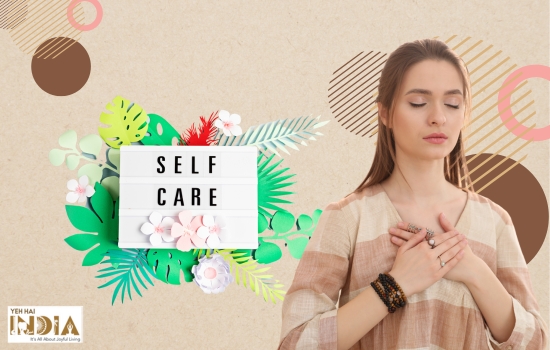Hemp is the most sustainable natural fabric material with skin protecting abilities and far lesser enviromental impact compared to synthetic fibres.
As we progress to the post-pandemic world, global communities are starting to adopt more reliable, healthy and sustainable lifestyles. For sustainable living, we need to naturally lead our lives in a way that does not harm the planet, its natural balance and ecosystem.
Such a lifestyle not only contributes to humanity’s symbiotic relationship with the earth’s natural ecology but also contributes to individual health and well-being.
Sustainable livelihood has pervaded across all walks of lives irrespective of age or geography and can now be found in Ayurveda, Natural sciences, yoga, clothing, accessories and many more.
Sustainable textile and fashion are the new vouge and textiles made out of natural and organic fabrics have become a perfect choice for everyday use. Through its tensile strength, versatile styling and high-yielding durability, ‘Hemp Fabric’ is one of the most earth friendly natural fibre you should never fail to know about.
Here is everything you need to know about Hemp Fabric, its properties and how you can incorporate it in your lifestyles!
What is Hemp Fabric?
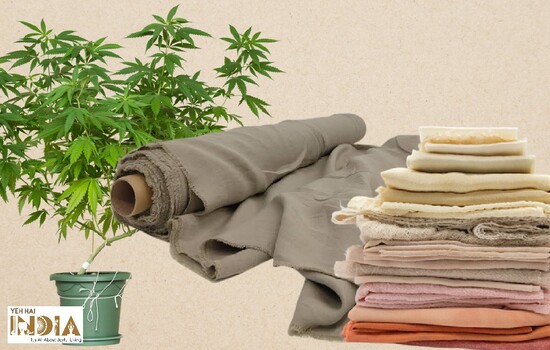
For those who might not know, Hemp fabric is a type of textile that is made from the stalks of the Cannabis Sativa plant. Contrary to popular belief, Hemp and marijuana are not the same things. Though they are both from the same species of a plant, they do not possess same uses and qualities.
Industrial hemp can be used to make paper, biodegradable plastic, health food, fuel, and textiles, among other things. Hemp is a multi-purpose plant that is useful not only in the medical field but also in the fashion industry.
The plant is recognised as an extraordinary tensile and durable textile, a key factor that governs the needs of modern-day fashion.
Recommended Story – Everything You Need To Know About Rajasthani Fabrics
How is Hemp different from Marijuana?

For thousands of years, Cannabis sativa has been cultivated for two unique purposes. One one hand, this plant is selectively grown for many generations altogether, to be high in tetrahydrocannabinol (THC), an intoxicant used for getting a high and on the other, for producing a chemical known as cannabinoid (CBD) that has astounding medicinal applications in a diverse range of fields minus any kind of intoxicating effects.
Other producers have purposely lowered the levels of psychotropic cannabinoids produced by their crops by breeding Cannabis sativa to produce stronger and superior fibres.
As a result, two different Cannabis sativa strains have evolved. It is a myth that Hemp is made from the male Cannabis sativa plant, while psychoactive marijuana is made from the female plant; in fact, female plants account for the vast bulk of hemp harvests around the world.
However, Female Cannabis sativa plants cultivated for textile applications have relatively low THC levels and do not generally possess pronounced sticky buds.
Hemp or more suggestively industrial hemp, is one of the many varieties of the cannabis sativa plant. This means, that both are related to the same species of the plant that undergo several controversial debates in the medical field.
To start with, the main difference between marijuana and hemp is that it will not get you high. The amount of tetrahydrocannabinol (THC) in hemp is lesser than 0.3%. This will not result in any psychoactive effect to individuals those who use it in the form of fabric.
Further, unlike marijuana, use or consumption of hemp is not illegal. Though marijuana is banned in a few countries and being debated in many, its recreational uses are largely forbidden by laws in many states.
How is Hemp Fabric made?
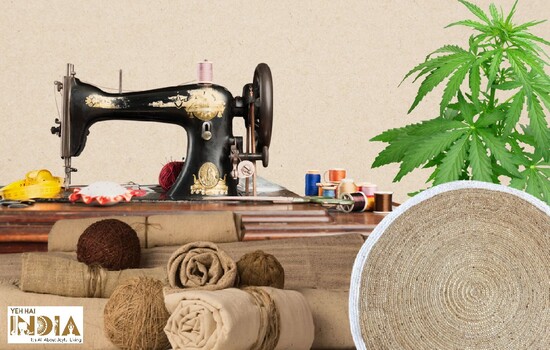
The hemp plant’s stalks are made up of two layers: the outer layer is made up of rope-like bast fibres, while the inner layer is made up of woody pith. The outer layer of the Cannabis sativa stalk is used for textiles; the inner and the woodier layer is typically utilised for fuel, construction materials, and animal beddings.
The outer layer of bast fibres from the hemp plant can be removed and processed into rope or yarn.
Hemp rope is so strong that it was formerly the preferred material for rigging and sails on ships, and it is still regarded as a superior fabric for clothing that outperforms cotton and synthetic textiles in almost every way.
The crop by its very nature is pest-resistant and hence is grown in mild climates with high humidity. Due to this nature, the crop also does not need pesticides in its process of growth.
Hence, the fabric is 100% natural and organic and yet, it outperforms any other textile that you may want to compare it with.
Properties and Features of Hemp
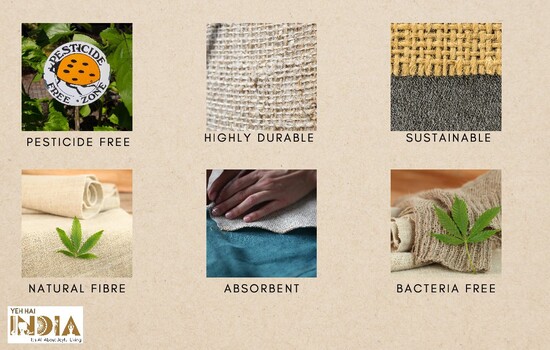
Hemp has a texture that feels just like cotton, when woven into a fabric, but it also bears a canvas-like appeal, which speaks of the effort that goes in crafting the threads into a single piece of cloth.
The fabric does not shrink and is highly resistant to pilling. It is extremely soft, but it is also quite durable as the fibres from this plant are long and tough.
While a regular cotton T-shirt may last for upto 10 years, at the most, a hemp T-shirt lasts double or triple that period, making it a great selection for daily as well as occasional wear.
According to some surveys and estimates, hemp fabric is said to be three times stronger than cotton or synthetic textiles.
Hemp is also a lightweight fabric that is very breathable and effectively allows the passage of perspiration from the skin to the atmosphere making it an excellent choice for hot weather.
This sort of fabric is simple to dye and is resistant to mold, mildew, and potentially prevent harmful microbes. The fabric softens with each wash and the fibres of hemp fabric do not disintegrate even after dozens of washes.
Organic hemp fabric is practically great for clothes because it is reasonably easy to create the clothing sustainably and any of its uses do not harm the individual who uses it or the environment.
To sum up, the fabric is:
- Natural, pest-resistant and hence, it is grown pesticide free.
- Highly durable and long lasting
- Sustainable, renewable and high-yielding natural crop
- All-natural fibre
- Absorbent
- Regulates body temperature
- Aids in prevention of bacteria or hazardous infections on the skin
How is Hemp Fabric used?
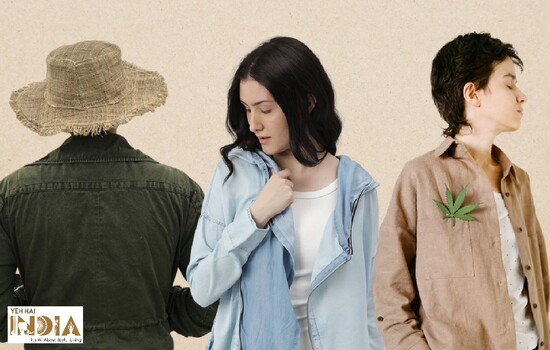
The primary use of Hemp remains apparel manufacturing, yet there are instances outlined in history of early 16th-117th centuries that it is originally prized as a novelty. As it is mainly grown in the Middle East and China, Hemp was popular for its cannabis sub-culture.
Nevertheless, currently many people across the world are enthusiastic about its properties and uses. It is used for its beneficial qualities rather than its relationship with marijuana.
Examples of Hemp garments include dresses, skirts, shirts, T-shirts, hoodies and clothing for children. The fabric is highly popular for it summer wear and T-shirts that last years and years.
In addition, fabric and textiles include table cloths, dish towels, bed sheets, upholstery and hand-kerchiefs among many other fabrics that are currently coming into the vouge.
Recommended Story – Top Startups Promoting Fabric Crafts of India
How much does Hemp-Fabric cost and how does it help the eco-system?

Compared to cotton, the production costs of hemp fabric are much less. Nevertheless, a number of market reasons have pushed up its price.
Cotton, for example, is produced on a far greater scale than hemp making it cheaper per volume. Further, since hemp cloth is still considered a novelty at this time, you might have to pay exhorbitant prices for hemp products at selected stores.
Regardless of its pricing, Hemp is known to be beneficial for those who wear it and for the eco-system. Some facts that you should be knowing about this fabric are:
- The fabric is extremely comfortable and easy-to-wear for anyone regardless of age or place of origin or climate
- Be it summer or winter, the fabric is available in every form you might require
- Hemp does not crease easily
- It is breathable and extremely light weight
- Hemp is UV Resistant
- It is recyclable and bio-degradable and hence, is a symbol of our responsibility towards the planet
All these benefits are reasons enough to choose hemp fibre over other natural fibers. The fabric is breathable, lightweight, absorbent and dries quickly, giving your skin lots of time and space to stay away from microbes and irritants. It carries much less carbon footprint and requires minimal amounts of water to manufacture it.
Let’s pledge to make choices that save our planet and help us connect with nature, for better.
Also Read – Fabriclore; Fabrics galore!










